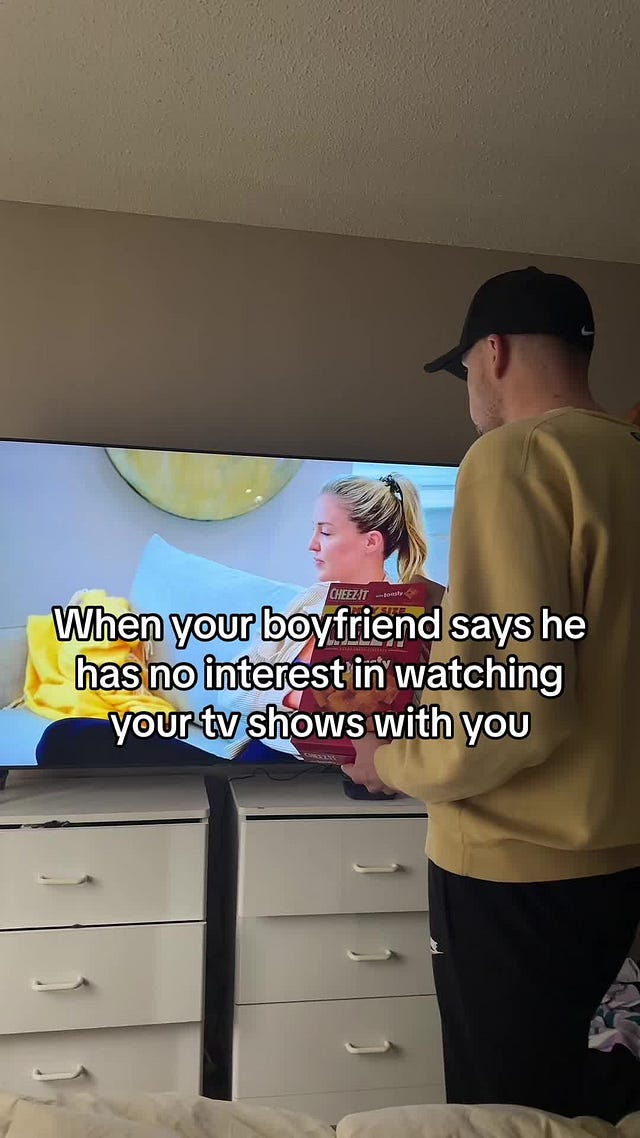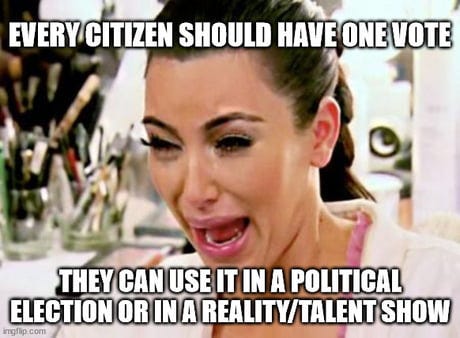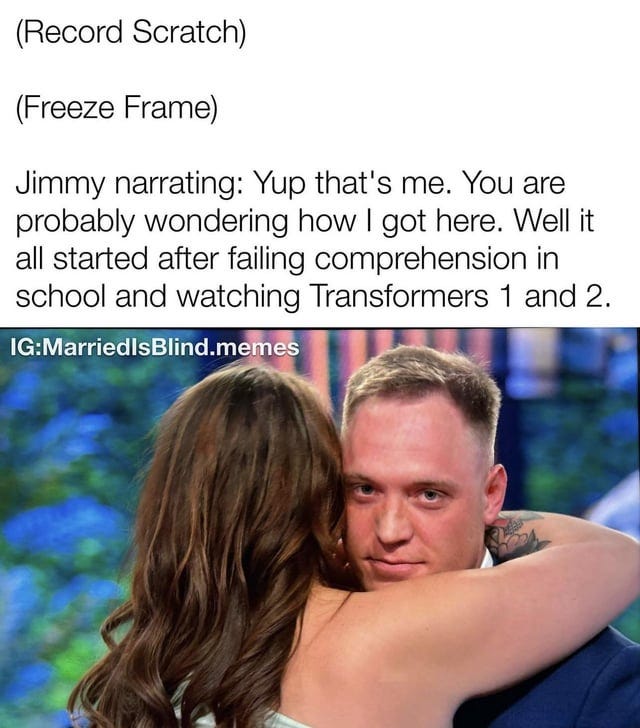The Psychology Behind the Love Is Blind Phenomenon
What makes shows like this so addictive? How does it tap into some of the worst and best of human nature?
If you asked me if I like shows such as Netflix’s "Love is Blind”, I will deny it till my dying breath. Yet while denying it, I may or may not pop my head out from behind my book to ask my wife “Who is that one?” only to dismiss it again saying I don’t care when she answers. I may walk past a little later asking “What did she say?” before continuing onto the my woodworking shop where I use power tools and stuff. And occasionally, I may remind my wife that the show is about to start and that I have the snacks ready…but I don’t enjoy it, I just see it as quality time with my wife.
Now that we’ve cleared that up and being completely honest, I want to get into the detail of why shows like this have become hits and have their viewers hooked…other viewers like my wife and her sister, not me of course.
Let’s admit it—Netflix’s Love Is Blind is addictive. You sit down to watch “just one episode,” and before you know it, you’ve powered through an entire season foregoing sleep and sanity for that “one more episode” lie we tell ourselves. You’ve debated with friends, tweeted about the latest drama, and maybe even shouted at your screen in frustration. But what is it that makes this reality show, in particular, so binge-worthy? It turns out the answer lies in some pretty fascinating psychological tricks.
Beyond the juicy drama, Love Is Blind cleverly taps into key psychological principles that pull you in and keep you watching. While this is a melting pot of principles and tactics, let’s focus on just a few so this post isn’t too long…so we don’t keep you too long from your next episode.
What is Love Is Blind
Love Is Blind is a show produced by Netflix. It’s been run in various countries but all have the same premise. The show promotes itself as a social experiment where single men and women look for love and get engaged, all before meeting in person. For 10 days, the men and women date each other in purpose-built "pods" where they can talk to each other through a speaker but not see each other. They are initially paired in a speed-dating format, but later can choose to have longer dates. The daters may extend a marriage proposal whenever they feel ready. There is more to it, but I’m going ot leave it there and let you explore that on your own. This is more for those that are familiar and want to understand it better.
As mentioned before, there are a number of other factors at play here. From Netflix’s ability to leverage the impact of dopamine for that “one more episode” or the timing before Valentines day when others are “looking for love”, etc. However, we will cover Netflix in a separate post and focus on just a few principles for this show in particular.
The Curiosity Gap: Why We Can’t Look Away
Right from the start, Love Is Blind hooks us with a mystery—will these strangers really fall in love without seeing each other? The show likes to promote this idea of “is love enough” to test a question that many have asked before “Do looks matter?”. While that could be debated in so many ways. Many cultures have arranged marriages as part of their practice but this show is aimed at an audience where this concept is foreign and done in a way that feels less prescribed. The show positions itself as an experiment, one that many of us would like to conduct but would find it quite difficult to execute ourselves. This taps into Information Gap Theory, which suggests that when we’re missing a piece of information, we feel a compulsion to fill in the blanks.
And it works. The show's structure teases us by withholding the answers we crave, such as whether physical appearances will strengthen or destroy the couples’ emotional bonds. It continues throwing in these curve balls, such as meeting the family, or seeing each other’s apartments, etc. to test the hypothesis. We’re wired to seek out this closure, and so, we keep watching.
“She’s just not right for him!”: Our Emotional Investment
Even though we don’t know the participants personally, by the second or third episode, we feel emotionally connected to them. This is thanks to parasocial relationships—the one-sided bonds we form with media figures. We laugh with them, cringe at their mistakes, and genuinely feel for them during their vulnerable moments. This creates a sense of familiarity that leads us to believe we know them very well and are supporting them in their quest to reach this goal that they are after.
In Love Is Blind, this effect is intensified as we watch the intimate, emotional exchanges between participants in the pods. We become invested in their success or failure, mirroring how we might feel toward friends in real life. This emotional connection is why it feels so hard to stop watching.
There is a number of articles that describe how contestants are put into stressful situations outside of the show as well (such as living in uncomfortable settings) to increase the emotional state of the participants. While I cannot verify the details and things may have changed over time, a number of legal battles have been documented around this if you want to explore it.
"I feel like they do it on purpose because they're trying to break you. They want you on your edge."
- https://www.businessinsider.com/love-is-blind-contestants-netflix-sleep-trailer-cockroaches-2023-4
This would allow us to see more intense emotions, and while I’m sure most of us have heard about mirror neurons, it doesn’t take a neuroscientist to explain that many people connect with others that have strong emotional reactions.
The Halo Effect: Pretty Faces, Stronger Feelings
Once the physical appearances of the contestants are revealed, the Halo Effect comes into play. This principle explains why we tend to attribute positive qualities to people based on one standout trait—like physical attractiveness. These types of shows will usually try to enlist people that fall into the goldilocks zone for attractiveness, i.e. good looking enough that enough people would find them appealing or more importantly “not unappealing” while not so good looking that the average person cannot relate to them. The limitations of who is in the show means we can only compare them to others in the show and thus “make our pick” (leveraging the endowment effect) and this choice compounds the halo effect as they start looking better and better in this confined world as we build an emotional connection to them. If we find someone appealing, we’re more likely to perceive their personality as likeable, kind, or even intelligent.
In Love Is Blind, the show capitalizes on this by building storylines that strengthen our perception of contestants. Editing and storytelling further influence how we feel about them, which is why we might root for some couples more than others. Never underestimate the power of good editing, theres a reason most Best Picture movies are the same ones that win Best Editing oscar as well.
Variable Rewards and Cliffhangers: The Dopamine Rush
Why do we keep hitting "Next Episode"? It's not just the cliffhangers—though they help. The show uses variable rewards—like a slot machine, where you don’t know what’s coming next but hope for a big payoff. Maybe a proposal, maybe a dramatic breakup, maybe a surprise twist. These unpredictable outcomes keep our brains firing off dopamine, the “feel-good” chemical that reinforces our desire to keep watching and is one of most effective strategies in getting people hooked onto a habit.
Add in those cliffhangers at the end of every episode, and it’s clear: Netflix has perfected the art of keeping us on the hook.
Social Proof: Everyone’s Talking About It
The success of Love Is Blind is amplified by social proof—the idea that we look to others when deciding what to do. When you see your friends, co-workers, or even social media buzzing about the show, you don’t want to miss out. The fear of missing out (FOMO) kicks in, making you feel like you need to be part of the conversation.
Netflix knows social validation drives more viewers to join in, creating a shared experience that’s impossible to ignore which is why the show is tied in with internal and external marketing efforts. External marketing efforts are no longer just an advert on YouTube or clever guerilla marketing campaigns, it’s getting the social media accounts of those participants active or partnering with micro-influencers to create viral content that peaks during show times. So what’s Internal marketing? That’s when Netflix uses it’s own platform to aggressively target you. While we can have an entire topic on Netflix and their ability to use their platform to target you, just know that the top ten in (insert area) is unique as are the images that are used for the show itself and that leverages your data to make sure it has the most impact.
Social Comparison: Reflecting on Our Own Relationships
As viewers, we’re constantly comparing our lives and relationships to what we see on-screen. Social Comparison Theory explains why we can’t help but ask ourselves, “Would I fall in love in the pods?” or “How would I react in that situation?” This kind of self-reflection deepens our emotional connection to the show, as we project our own values, fears, and desires onto the participants. It’s even more powerful for couples that ask if they would still be together if they were on the show…and while that may not end well for the evening conversation sometimes, it certainly helps keep the show relevant and brings the show into their viewers personal lives. This reinforces the idea of the “social experiment” and curiosity we have.
Depending on how we see ourselves in comparison, we might feel validated, envious, or even inspired by the show’s outcomes.
Scarcity and Anticipation: The Waiting Game
One of the most effective tools the show uses is scarcity—the psychological principle that we value things more when they are limited. By releasing episodes in batches or making viewers wait between seasons, Netflix creates anticipation. That scarcity—knowing there’s a finite amount of content—makes each new episode feel like an event. While many of us pre-netflix are familiar with this concept, it’s those that have become accustomed to on-demand entertainment that are most affected. Having been fed content practically intravenously for so long, to have it taken way only feeds the need for more as we deal with withdrawal. And yes, that does sound very “drug-like” but so are many things that we form habits with.
The anticipation builds excitement and draws you deeper into the experience, especially when you know millions of others are waiting right alongside you.
The Peak-End Rule: How We Remember the Show
Finally, Love Is Blind benefits from the Peak-End Rule, a psychological principle suggesting that we remember experiences based on their most intense moments (the peaks) and how they end. The dramatic highs—the engagements, the confrontations—and the emotional finales ensure the show leaves a lasting impression. These are the moments we talk about long after we’ve finished watching, making the entire experience feel more satisfying in hindsight. We see examples of this in every recap at the start of an episode and at the end when they give you a very dramatic sneak peak at the next episode. Social media reiterates these peak moments when they go “viral”. It’s another reason the show hosts a “reunion” after it ends: to revisit these moments and keep them top of mind. The more consistently these moments are given to us, the stronger the effect.
Safely Indulging Our Inner Voyeur?
One of the key factors that makes Love Is Blind so compelling is how it taps into our voyeuristic tendencies. Unlike celebrity reality shows, where we watch larger-than-life figures navigate their extravagant lives, the participants in Love Is Blind feel much more relatable. They are everyday people with everyday struggles, which makes their emotional journeys more intimate and engaging. Watching them navigate love and heartbreak behind the closed doors of the pods feels like peeking into something personal, almost secretive, but in a way that feels permissible. This relatability amplifies our curiosity, allowing us to indulge in the human desire to observe others without crossing into fantasy, creating a deeper emotional connection.
Misdirection: Physical Attraction is NOT Being Tested
What’s really interesting about the show is that although it positions itself as focusing on love beyond physical attraction, when you look closely, it’s more about relationships inside a contained environment versus an uncontained one. This becomes evident from the fact that despite the build up to the reveal, the physical reveal rarely makes much difference to most couples. What’s far more common is that external factors—like where they choose to live, family dynamics, and lifestyle differences—become the real test. These are issues that aren't present when the couples are living in the controlled environment of the pods and that is the real experiment but most of us form relationships outside the controlled environment so that wouldn’t make for as an engaging premise.
How Can You Create This Effect?
The psychological principles at play in Love Is Blind—like creating curiosity, leveraging parasocial relationships, and tapping into the power of unpredictability—are all tools that brands can use to build strong emotional connections with their audience. By creating relatable, human experiences that resonate with real emotions, brands can form deeper bonds with consumers and just like Love is Blind contestants become pseudo-celebrities, your products can also do so. Using storytelling techniques that evoke empathy or nostalgia can help create a lasting emotional imprint especially if timed with real-world moments through social media engagement, turning passive consumers into active participants who feel emotionally invested in the brand. It's about finding ways to weave your product into the consumer's life, making it relevant and reflective of their own experiences.
A Word of Caution: The Risks of Thoughtless Application
While these psychological tactics make Love Is Blind and other Netflix reality shows wildly successful, applying them without careful consideration can backfire in other contexts. Brands or media creators who rely too heavily on creating emotional peaks or withholding key information may risk frustrating their audience. The key is to balance these principles thoughtfully, ensuring that you're building trust and creating value for your viewers or customers. You only need to look into how shows like Terrace House on Netflix took these principles too far and it ultimately lead to tragedy.











